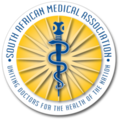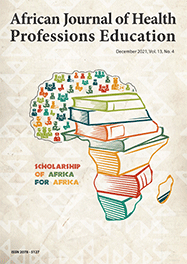Research

Clinical undergraduate medical student training at Kimberley Hospital, Northern Cape, South Africa: ‘A test of fire’
Abstract
Background. Medical schools in South Africa (SA) are challenged to increase the annual output of medical doctors. Satellite medical training campuses at remote public health facilities to expand the undergraduate clinical training platform may be a solution. Kimberley Hospital, Northern Cape, SA has been identified as a remote training site affiliated to the University of the Free State, Bloemfontein, SA.
Objectives. To profile the clinicians at Kimberley Hospital Complex in terms of their knowledge of, skills in and perspectives on the added responsibility of clinical undergraduate medical student training prior to the launch of the proposed undergraduate student rotations.
Methods. The study followed a qualitative research design using semi-structured interviews with full-time SA- or foreign-qualified specialists at Kimberley Hospital Complex.
Results. We identified the strengths and weaknesses of Kimberley Hospital, opportunities created for local healthcare providers, Kimberley town and the Northern Cape province, and threats to the success of the programme. Overall, responses were optimistic and depicted excitement about the new challenge.
Conclusion. The perspectives of emerging clinician teachers at Kimberley Hospital Complex may serve as a point of reference for preparation of both clinician educators and programme administrators at the complex and other emerging satellite medical schools in the SA setting.
Authors' affiliations
S Joubert, Department of Internal Medicine, Faculty of Health Sciences, University of the Free State, Bloemfontein, South Africa
V J Louw, Department of Internal Medicine, Faculty of Health Sciences, University of the Free State, Bloemfontein, South Africa
Full Text
Keywords
Cite this article
Article History
Date published: 2017-12-06
Article Views
Full text views: 3318




.jpg)
Comments on this article
*Read our policy for posting comments here